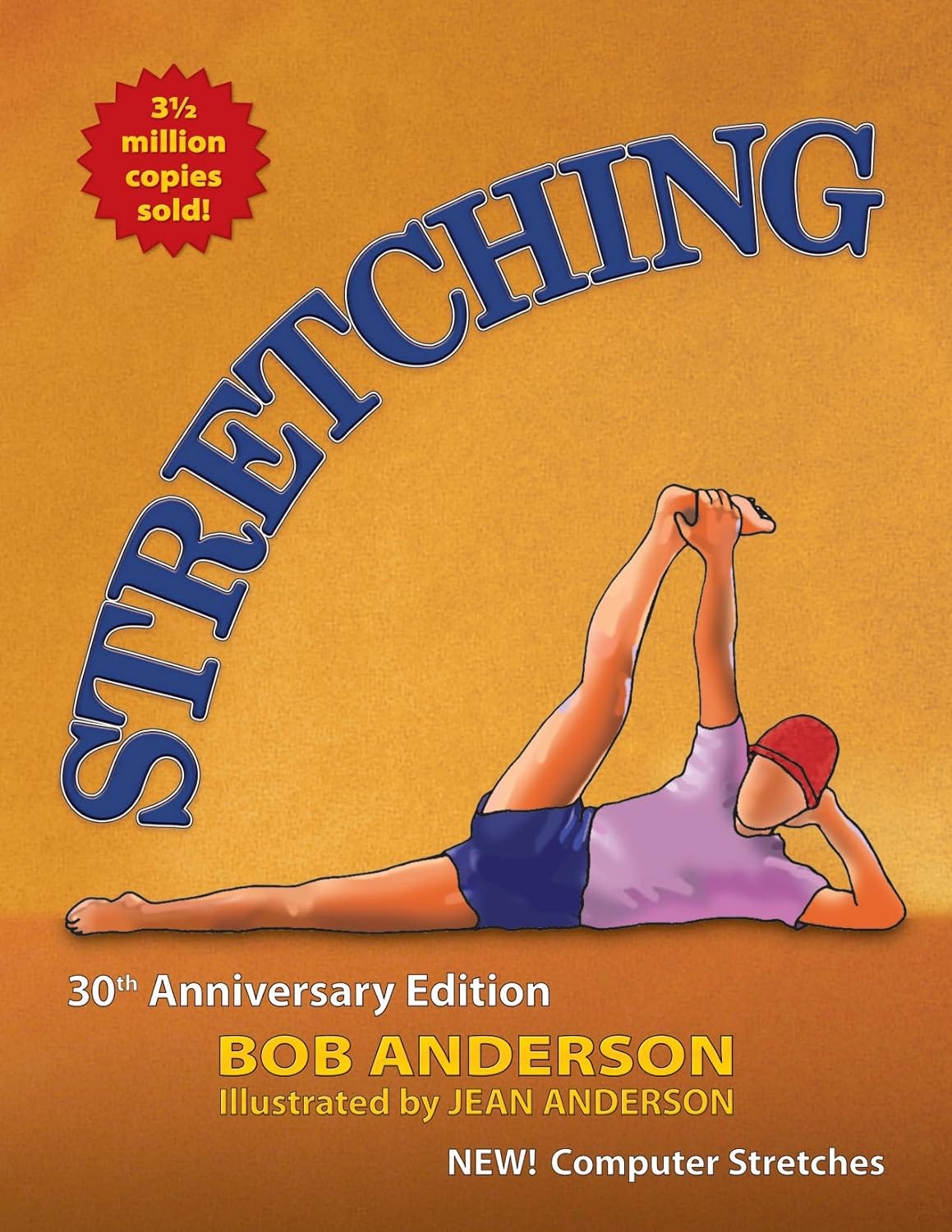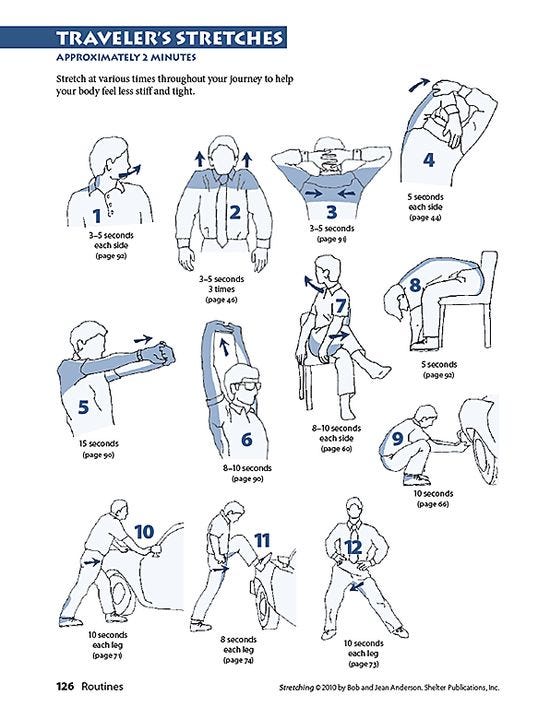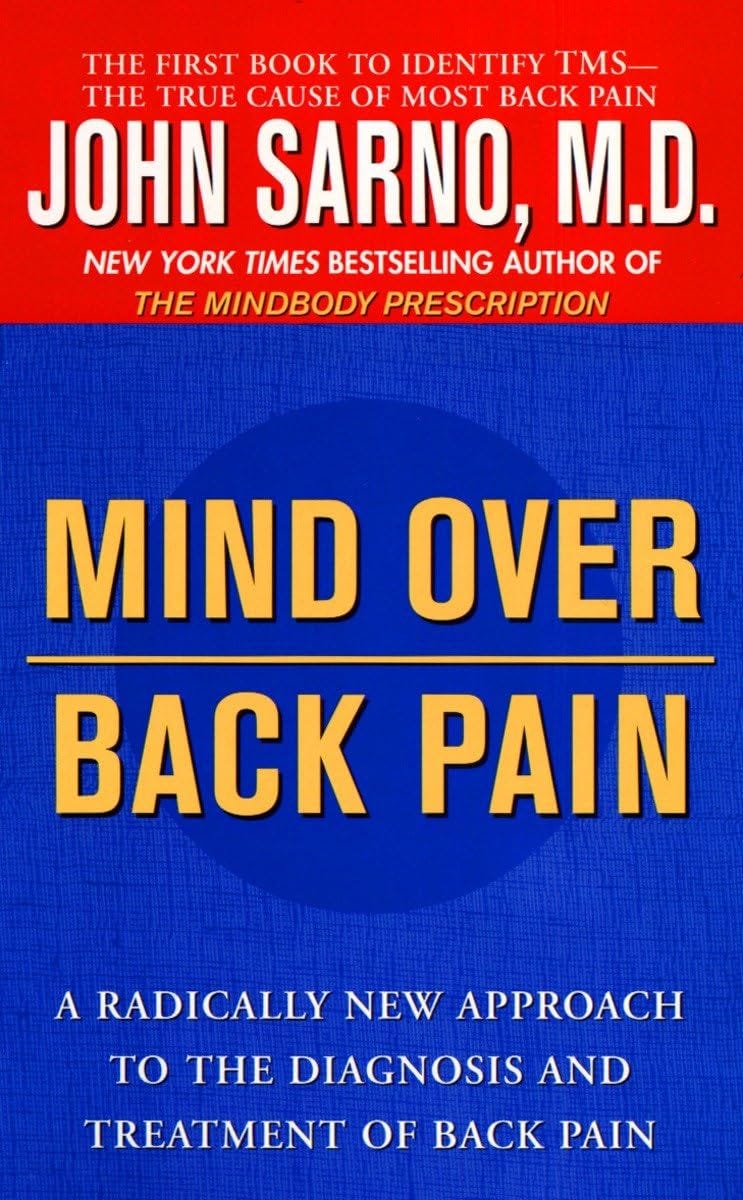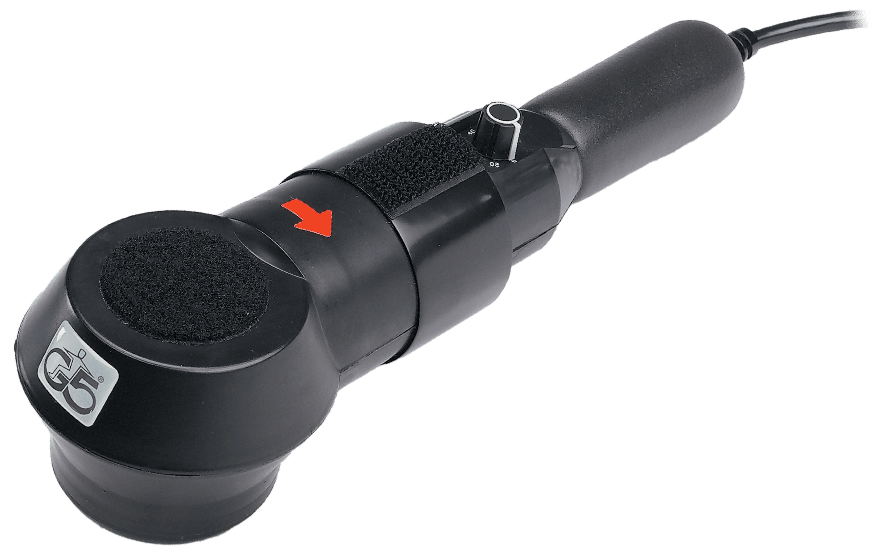Stretching & Massage
Tools for Possibilities: issue no. 96
Once a week we’ll send out a page from Cool Tools: A Catalog of Possibilities. The tools might be outdated or obsolete, and the links to them may or may not work. We present these vintage recommendations as is because the possibilities they inspire are new. Sign up here to get Tools for Possibilities a week early in your inbox.

Most comprehensive stretching manual
I haven’t encountered any source on this subject as broad, accessible, and easily applied as Bob Anderson’s classic Stretching, a patient and friendly stand-in for my eight-grade P.E. teacher.
The 30th anniversary edition of this guidebook came out recently, with even more stretches and illustrations, and it’s easily the most comprehensive work on the subject. I love the activity-specific sections: cyclists, for instance, are shown stretches that not only address the muscle groups made tight and tense by our specific sport, but the stretches geared toward bike riders even include a bicycle to be utilized as a support. Activities from weightlifting to computer using get their own sections, too.
Organizationally, Stretching shines. Tight neck? Rigid shoulders? Thumb through to your prescribed routine and get to work. With minimal flexibility but a willingness to make an effort, almost anyone can use this book to become more limber, healthier. — Elon Schoenholz
- Stretching feels good when done correctly. You do not have to push the limits or attempt to go further each day. It should not be a personal contest to see how far you can stretch. Stretching should be tailored to your particular muscular structure, flexibility, and varying tension levels. The key is regularity and relaxation. The object is to reduce muscular tension, thereby promoting freer movement—not to concentrate on attaining extreme flexibility, which often leads to overstretching and injury.
- Who Should Stretch?
Everyone can learn to stretch, regardless of age or flexibility. You do not need to be in top physical condition or have specific athletic skills. Whether you sit at a desk all day, dig ditches, do housework, stand at an assembly line, drive a truck or exercise regularly, the same techniques of stretching apply….if you are healthy, without any specific physical problems, you can learn how to stretch safely and enjoyably. - Why Stretch?
– Reduce muscle tension and make the body feel more relaxed
– Help coordination by allowing for freer and easier movement
– Make strenuous activities like running, skiing, tennis, swimming, and cycling easier because it prepares you for activity; it’s a way of signaling the muscles that they are about to be used.


Unorthodox back pain philosophy
Back pain is ubiquitous in developed countries. Yet the honest truth is that science is uncertain as to what causes it. Theories abound, as does a lot of pseudo-therapy. There are probably multiple origins and different varieties of lower back pain. However, one theory says a large portion of back pain starts with mental tension. If you have an inkling that your back pain is linked to stress, I strongly suggest you seek out this perennially-in-print book (since 1972). My speaking agent, who deals with hundreds of stressed-out type A’s and the consequential epidemic of back pain they carry with them, routinely hands out this book. It seems to be the one thing that helps them the most. It helped me. By adopting the view that lower back pain is a syndrome in large part fostered by the mind/body complex, I’ve been able to avoid surgery and painkillers and resume my life. Your mileage may vary, but it’s worth a read. — KK
- The reason for this obsession with discs is that it does seem logical. There are those degenerating structures at the lower end of the spine, right where a lot of pain and spasms occur; there are lumbar and sacral nerves conveniently located so that they can be compressed by bulging or herniated discs; there is pain in the leg, proving that those nerves are compressed.
- What these data confirm is that degenerative processes have nothing to do with most back pain. Degeneration is progressive and relentless; serial X rays as one ages document this fact. Yet back pain is far less common in the older age groups. According to the conventional diagnostic concepts, everyone over the age of sixty should have back pain.The bar graph in Figure 9 [above] gives the age by breakdown by decade. Seventy-seven percent of the group fell between the ages of thirty and fifty-nine. Note that there are fewer patients in their sixties than in their twenties! Since the majority of back pain syndromes are attributed to degenerative processes – for example, degenerative osteoarthritis and degenerative disc disease – it is strange, indeed, that there were only thirteen patients aged sixty to sixty-nine, and seven in their seventies.

Professional massage assist
The G5 is a professional-grade massage unit that has long been a staple of naturopaths, chiropractors and physiotherapists, many of whom report still using their 40- or 50-year-old units on a daily basis. The G5 comes in dozen or so professional models for use in hospitals, physical therapy and similar clinics. Most pro sports teams (football, basketball, baseball, anyway) have a G5 in their training rooms. This is no Costco-type unit, but an unbelievably robust massage gun that will astonish you within seconds.
The larger professional units with stands and rollers go for about $1,200. The secret to their extraordinarily powerful and effective massage action is a coiled cable that turns and rotates the head, rather than pounding or vibrating as less durable units do. All of the G5s have changeable applicator heads for doing reflexology, exfoliation treatments, lymphatic drainage, cellulite reduction, Trigger Point therapy, therapeutic massage, or just plain old relaxation massage.
For home use I recommend the Pro-Power unit, which is sold as a portable travel version of the G5. It goes for about $350. Since I write and work at a desk a lot, I use mine almost daily, especially when doing big long projects. If you don’t want to take the time to schedule and pay for an $80 massage, anyone can use this on you without getting sore hands or wanting to quit. I actually own two! — Hakim Chishti
07/22/24





